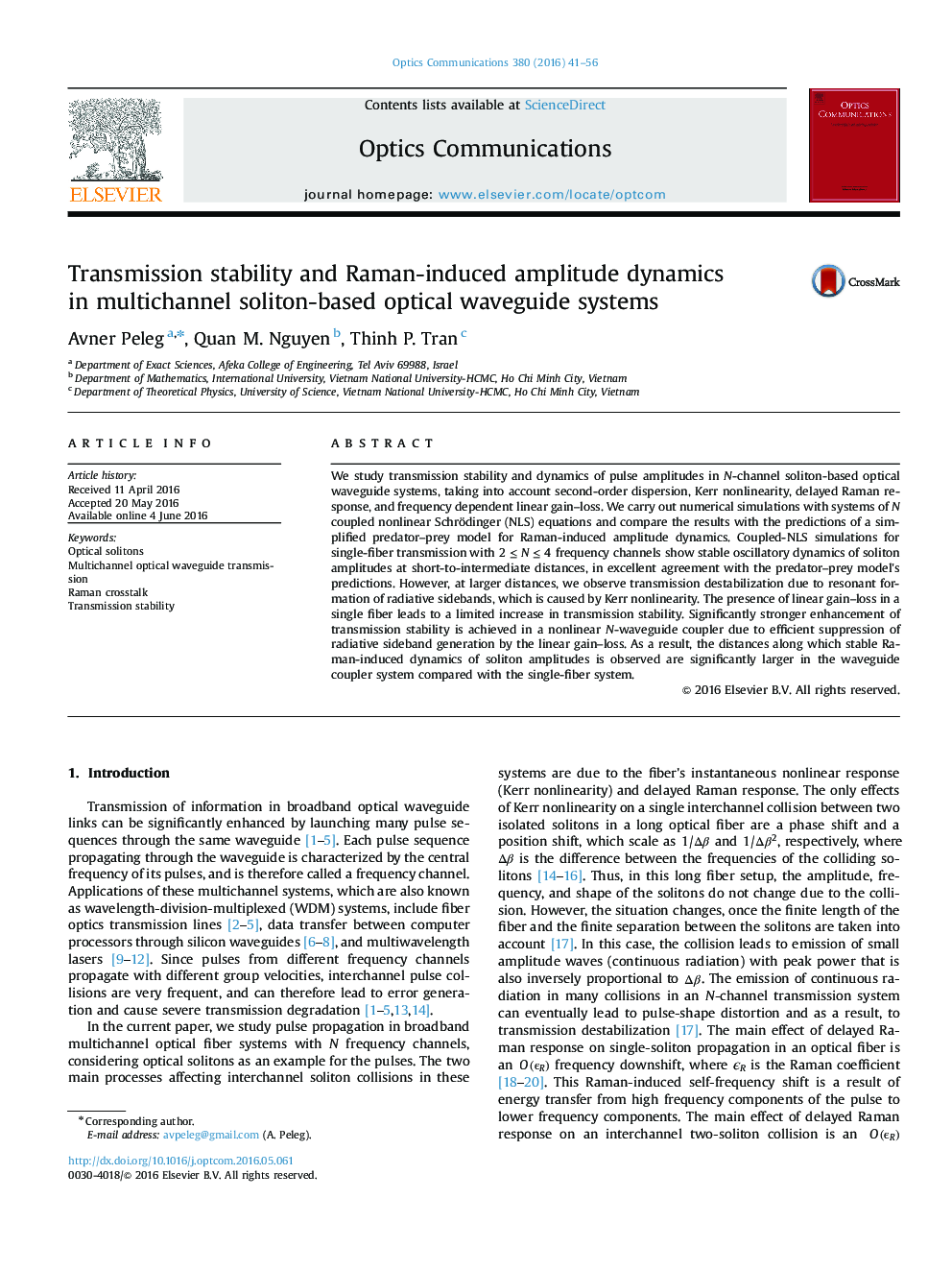| Article ID | Journal | Published Year | Pages | File Type |
|---|---|---|---|---|
| 1533088 | Optics Communications | 2016 | 16 Pages |
•We study Raman-induced amplitude dynamics in multichannel soliton transmission.•In a single fiber, we observe stable amplitude dynamics at intermediate distances.•Transmission destabilization at larger distances is caused by radiative sidebands.•Significant increase of transmission stability is achieved in a waveguide coupler.•Stable amplitude dynamics is observed along larger distances in a waveguide coupler.
We study transmission stability and dynamics of pulse amplitudes in N-channel soliton-based optical waveguide systems, taking into account second-order dispersion, Kerr nonlinearity, delayed Raman response, and frequency dependent linear gain–loss. We carry out numerical simulations with systems of N coupled nonlinear Schrödinger (NLS) equations and compare the results with the predictions of a simplified predator–prey model for Raman-induced amplitude dynamics. Coupled-NLS simulations for single-fiber transmission with 2≤N≤42≤N≤4 frequency channels show stable oscillatory dynamics of soliton amplitudes at short-to-intermediate distances, in excellent agreement with the predator–prey model's predictions. However, at larger distances, we observe transmission destabilization due to resonant formation of radiative sidebands, which is caused by Kerr nonlinearity. The presence of linear gain–loss in a single fiber leads to a limited increase in transmission stability. Significantly stronger enhancement of transmission stability is achieved in a nonlinear N-waveguide coupler due to efficient suppression of radiative sideband generation by the linear gain–loss. As a result, the distances along which stable Raman-induced dynamics of soliton amplitudes is observed are significantly larger in the waveguide coupler system compared with the single-fiber system.
